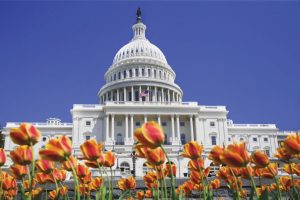Before the COVID-19 pandemic took hold on the world and the United States, many community bankers watched the slow fall of their on-balance sheet liquidity. Throughout the last decade of economic expansion, many community banks’ loan demand consistently outpaced deposit growth. At the beginning of 2020, bankers’ expectations for the year were for more of the same: a combination of steady loan growth and an expanding net interest margin. The pandemic completely changed those expectations.
The First Wave
The first liquidity wave in the banking system started gaining momentum in early March as the pandemic sparked fear and panic in the financial markets. The Federal Reserve lowered its benchmark rate by 50bps in early March, only to outdo themselves a couple of weeks later during an emergency meeting with a 100bps cut. Two key things happened in March that started the liquidity wave. First, dollars flowed into the banking system seeking the safety of the FDIC deposit insurance. Second, larger corporations boosted their cash positions and overall balance sheets by drawing on their credit lines.
The wave grew larger in early April as billions in stimulus checks were sent out and the personal savings rate reached an all-time high. Furthermore, the Paycheck Protection Program (PPP) loan program rolled out as part of the CARES Act, which added more liquidity as the initial $349 billion in PPP funds were lent out in under two weeks. While many businesses spent their PPP loan funds over the next two to three months, billions of the loan proceeds sat idle in business operating accounts.
The Impending Second Wave
Where do liquidity levels in the banking system liquidity go from here? Will upcoming loan demand gobble them up, or will there be plenty left over? Outside of additional second draw PPP loans, loan demand remains lower than pre-pandemic levels. Recent PPP loan forgiveness has reduced overall loan portfolios. The additional $2 trillion stimulus package currently moving through Congress includes larger direct stimulus payments, which should further add to overall liquidity levels.
Balance Sheet Considerations
When will loan demand return to a more normal level as seen before the pandemic? One guess is as good as any, but we know that stockpiling cash or short-term liquidity isn’t a conservative long-term solution during a historically low-rate environment. Net interest margins compressed significantly over the last year. We need to take a hard look at our short-term liquidity position and ask ourselves if our cash position is too high. Are we waiting too long for loan demand to come back or for deposits to surge out of the bank? It is challenging to predict your liquidity position outside of a few months given all the external factors that can influence it in today’s environment.
In 2021, the margin compression fight has shifted more heavily toward maintaining asset yields as most community bankers have cut their cost of liabilities back down to historic lows. If quality loan demand comes back soon, everyone will be ready. However, if deposit growth continues to outpace loan growth, we need to stay fully invested within the bond portfolio. The recent steepening of the yield curve has made bond yields a little more attractive. Yes, we get it; recent bond yields are lower than the good ole days, but remember to compare current bond yields to what holding cash earns (usually around eight-to-10 basis points). The yields on our short-term cash liquidity move in sympathy with the Fed, and it is highly unlikely the Fed will be moving their benchmark rate anytime soon. Since the Fed cut rates back to zero last March and the first liquidity wave began, it has remained costly to sit in too much cash liquidity. The banking environment continues to change rapidly, and it can be a daunting task to keep up; however, staying fully deployed should continue to remain at or near the top of senior management objectives
Dale Sheller is Senior Vice President in the Financial Strategies Group at The Baker Group. He joined the firm in 2015 after spending six years as a bank examiner with the Federal Deposit Insurance Corporation. Sheller holds a bachelor’s degree in finance and a master’s degree in business administration from Oklahoma State University. He works with clients on interest rate risk management, liquidity risk management and regulatory issues. Contact: 800-937-2257, dsheller@GoBaker.com.







